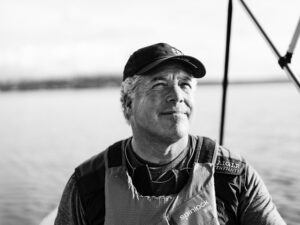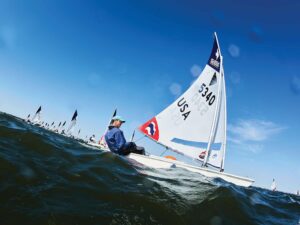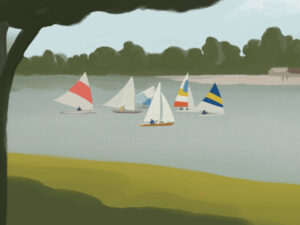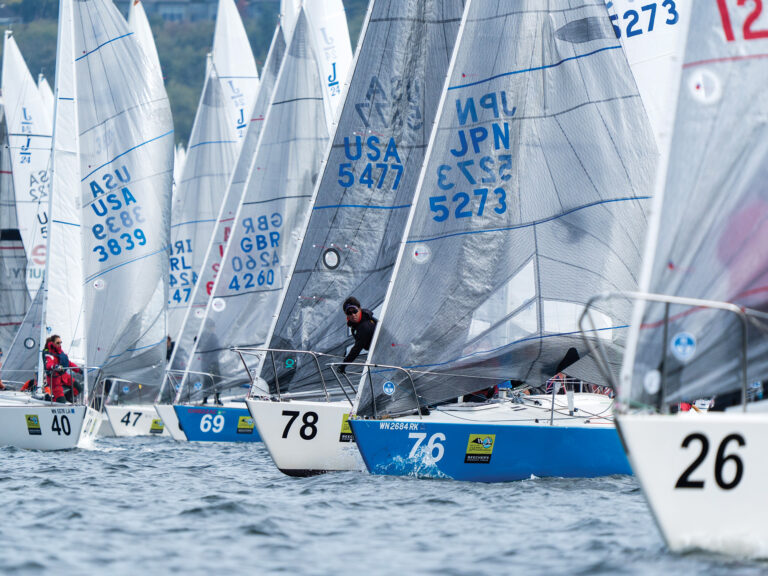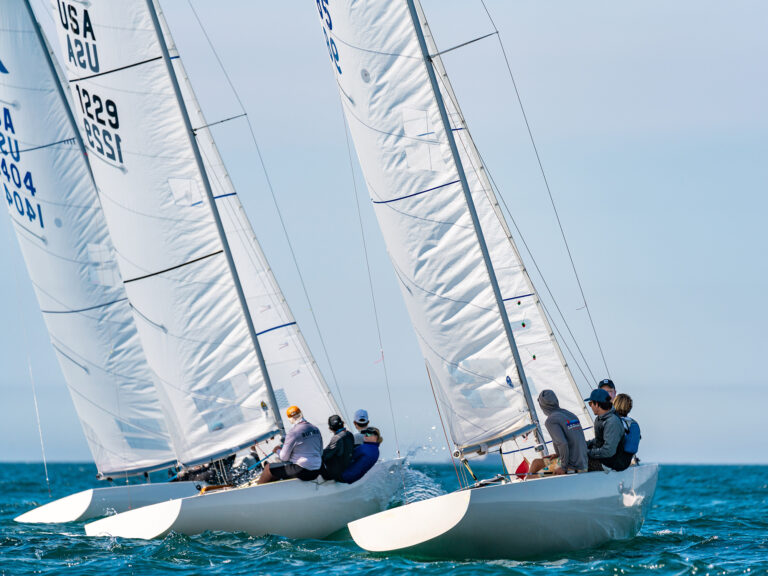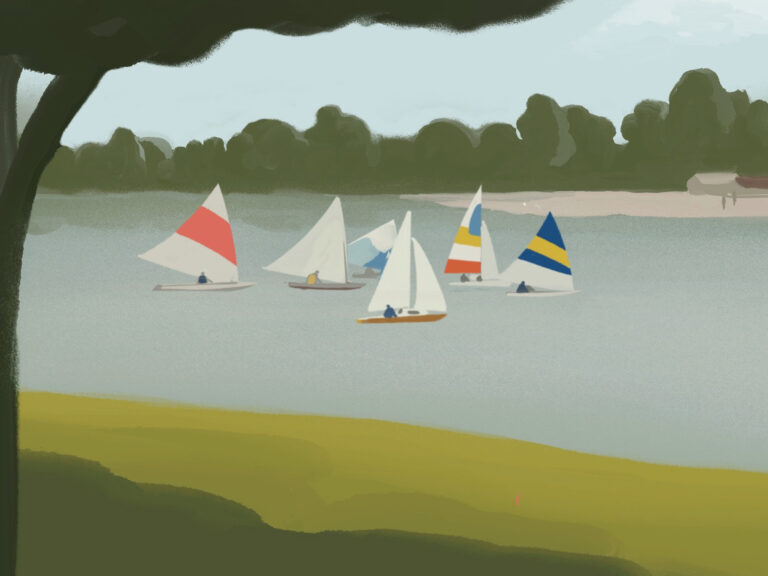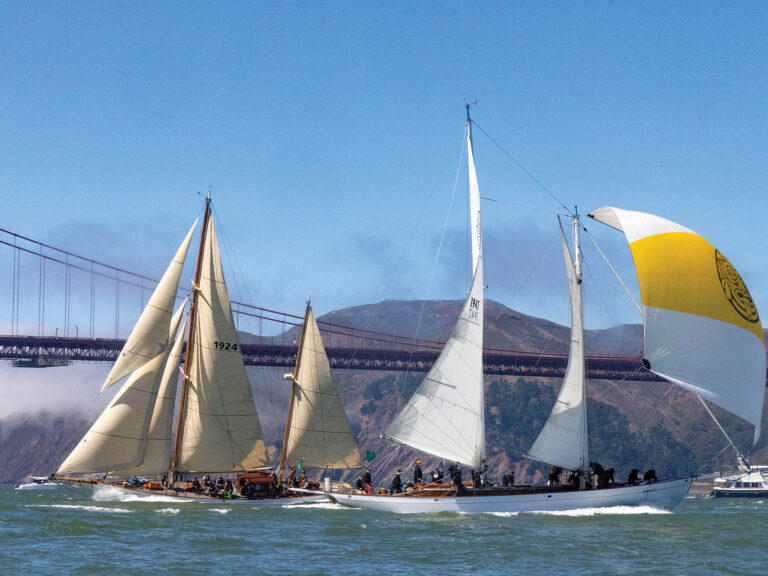If there’s one certainty for the next Americas Cup, it’s that it will be the most revolutionary event the sailing world has ever seen. Yet, instead of anticipation, there’s almost universal disdain for the choice of wing-masted multihulls. A recent Sail World survey found that 67 percent of racing sailors would prefer to see the next Americas Cup sailed in monohulls. A common argument is that multihull match races are less competitive. But I think, if we look a little further, we’ll find the real cause is keelboatitis.
For starters, let’s debunk some myths, such as the one that multihulls will not be evenly matched, and that BMW Oracle already has a significant design advantage. In an attempt to help challengers get up to speed, BMW Oracle has commissioned the AC45. These 45-foot, wing-masted cats will begin hitting the water next month, with racing commencing in the 2011 Americas Cup World Series. These yachts are designed by the BMW Oracle design team, including Dirk Kramers and Scott Ferguson, and the final design rests with the independent Americas Cup Race Management authority. While this development should be seen as a noble gesture intended to foster development of the skills needed to design and race wing-masted yachts, many say it’s simply an excuse for BMW Oracle to start designing its defender in advance of the challengers. Where does this argument fit in reality? The simple fact of the matter is that only two, large, wing-masted multihulls have ever been built, and one of those was Team Dennis Conner’s Stars & Stripes, designed for the 1988 America’s Cup. Those with the most recent experience in building large, winged multihulls are designing the AC 45. The tooling is being built to allow multiple builders to produce the boats, and the engineering details are available to any challenging team. While BMW Oracle may gain some design insight from this process, if their motive was to defend the Cup “at any cost,” why would they provide design and build support to other teams?
When we look at the larger AC 72 rule, it’s important to remember that US Sailing, with Morreli and Melvin as principal designers, independently drafted the rule. The rule was then made public—view draft 2.0 here—and all teams have the ability to make comment on the new rule. Further, teams may share designers for hulls, wings, and structures until April 1, 2012 (AC34 Protocol, Sec 33.1). Teams and designers can collaborate with anyone, including the defender. Let’s hope teams take advantage of this resource while it’s available—it should increase everyone’s design knowledge. This is the most open set of design rules in the modern Americas Cup era, and it should bring teams closer, in terms of performance, than any previous AC class launch.
It’s also critical to remember that a monohull-based class rule wouldn’t necessarily guarantee evenly matched yachts, or design collaboration. In 1992, the first Americas Cup event in IACC yachts, there was a wide disparity between yachts. Only after 15 years of refinement did the class get to the close racing seen during AC 32.
Word has it that Emirates Team New Zealand has hired Morreli and Melvin as designers, and Steve Killing and Magnus Clarke of C-class fame to design wings. That should make for at least one fast challenger right out of the blocks.
In 1851, John Cox Stevens brought the yacht America to Cowes to demonstrate the best of American boatbuilding. The AC 72 promises to bring American boatbuilders to the forefront once again. And if you still don’t believe multihulls can be great racing machines, watch these highlights from the Extreme Sailing Series:
From a rule and design standpoint, there’s no reason to believe the next Americas Cup will be any less competitive than one held in monohulls. So where does this multihull disdain come from? Keelboatitis, of course, the disease of sailing slow, lead-filled sailboats. It’s an all-too-common disease for most North American sailors. For too many of us, multihull or high-performance dinghy sailing is something we only see in magazines and You Tube clips. We can’t relate to it, and since we can’t relate to it, we’ve become fearful of it. Most racing sailors would love to sail in the Americas Cup. When the event was in monohulls, that dream was more real. With the Cup unfolding in high-tech multihulls, we can’t lull ourselves to sleep fantasizing of Cup glory—because we’d have no clue how to drive a cat, even in dreams.
Now that the Cup’s in cats, now’s the time to expand your sailing horizons. Go find a multihull or a small dinghy to sail. There’s a 505 or International 14 or Hobie 16 sitting in most boat parks. Meet the owners, and take a ride. Sure, you’ll need to learn some new skills, but you’ll find those skills will make you a better keelboat sailor. You may notice something reawaken in you. That feeling of adrenaline rushing through your veins as you take off on a screaming reach, the rush you had when you first got hooked on sailing, it can all be yours again! In other parts of the world, boat parks are filled with small, high-performance boats. The AC72 is our opportunity to catch up. Plus, small, high-performance dinghies cost a lot less than keelboats, require fewer crew, and will attract a younger demographic to your yacht club.
North American sailors, this is your wake up call. The next Americas Cup will change the sport forever. Bust out of the bubble and experience lead-free sailing!

